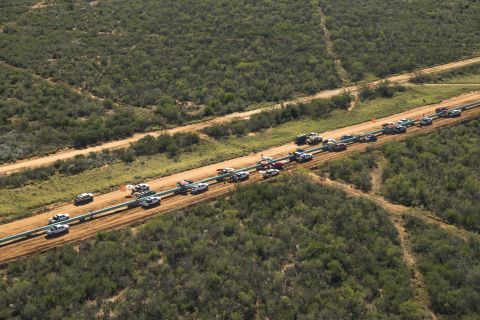To have an opening plenary session focused exclusively on the global deepwater sector during the high-profile Society of Petroleum Engineers’ Annual Technology Conference and Exhibition – a conference otherwise almost entirely dominated by the subject of onshore unconventionals – was a clear acknowledgement by organizers of the significant and long-term role that deep water and the wider offshore sector are set to play in the future.
How significant? Well, panelist John Gremp, FMC Technologies’ chairman and CEO, summed it up nicely: The deepwater industry must find and produce an additional 10 MMb/d of oil within the next seven years to meet forecast global energy demand.
With a predicted 27 MMb/d in total of additional output needed by 2020, the stark reality is that the offshore sector overall is expected to supply around 62% of the required oil and gas reserves, he told delegates. Accessing new reserves, accelerating production, increasing reservoir recovery rates, and reducing total costs are just some of the key challenges and opportunities to be overcome.
Concerning accelerated production, Gremp highlighted the need to shorten system lead times and improve production optimization and flow assurance technologies through advances in subsea processing such as seabed separation and boosting. “The really compelling argument is that it does so much. It reduces costs, increases recovery, and becomes an enabling technology,” he said. Gremp also stressed that the drive to reduce project costs should see the industry strive to optimize field layouts, increase equipment standardization, and improve system availability.
Deepwater field recovery rates also got their fair share of attention. With those rates currently running at about half the rate for onshore fields, they sure need it. According to Gremp’s fellow panelist John Hollowell, executive vice president of deep water for Shell Upstream Americas, frontier plays around the world will require technological advances in HP/HT equipment and EOR.
“Facilities of the future are going to be more complex than we have now. The ability to have more ‘eyes’ on the facility itself, controlling things from the beach, will be important,” he said. “Enhanced recovery methods like artificial lift and improved oil recovery technologies will be needed from first production.”
Hollowell pointed out that projects are becoming deeper and more complex but that there is “a lot to play for,” such as on the operator’s Auger field in the US Gulf of Mexico (GoM). The field had produced for 20 years before an additional 100 MMbbl of reserves were revealed right underneath it using new technology.
Another speaker, Richard Ward, president of completions and production at Baker Hughes, highlighted the industry’s goal of obtaining Lower Tertiary recovery rates of more than 20% compared to the estimated 10% that fields will yield with natural flow.
Ward summed up the future challenge – and opportunity. In the GoM, development capex will grow by 12% annually, with around US $20 billion per year to be spent by the end of this decade. “By 2020 more than 8,000 oil wells are expected to be operated subsea. And that’s counting only new fields,” he said.
The deepwater debate looks set to stay top of the bill for many years to come.
Recommended Reading
East Daley: New Pipelines Could Open Permian Floodgates
2024-12-18 - Led by the opening of the Matterhorn Express, a slew of projects is set to battle regional bottlenecks in the Permian Basin region but power generation may be the catalyst for newly announced pipelines.
Matterhorn NatGas Pipeline Ramps Up Faster Than Expected
2024-10-22 - The Matterhorn Express natural gas pipeline has exceeded expectations since its ramp up on Oct. 1 for deliveries to interstate systems owned by Kinder Morgan, Williams and Enbridge.
Finding a Niche: Midstream Giants Target Private G&P Assets
2024-10-23 - Smaller, non-publicly owned midstream companies are moving quickly for a position in a consolidation-driven market.
Private Midstream Executives: More M&A, More Demand, More Gas Pricing Woes
2024-10-17 - Private midstream CEOs discuss the growth, opportunities and challenges that lie ahead.
Energy Transfer Shows Confidence in NatGas Demand with Pipeline FID
2024-12-11 - Analyst: Energy Transfer’s recent decision to green light the $2.7 billion Hugh Brinson line to Dallas/Fort Worth suggests electric power customers are lining up for Permian Basin gas.
Comments
Add new comment
This conversation is moderated according to Hart Energy community rules. Please read the rules before joining the discussion. If you’re experiencing any technical problems, please contact our customer care team.





